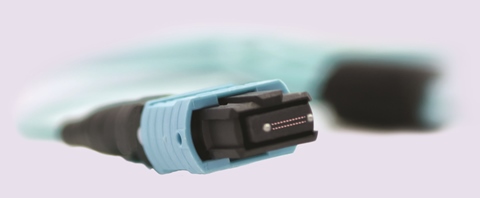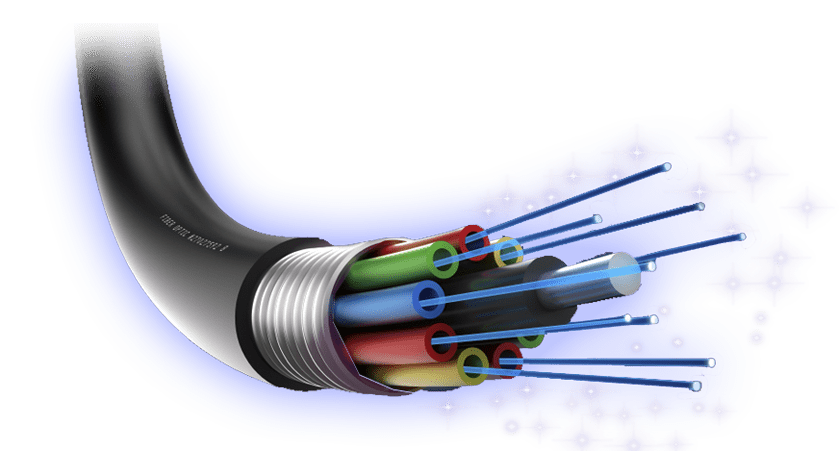
Data rate increase possibilities A so-called “G” increase is visible in all areas where fibre optic transmission is discussed. Just a couple of years ago the main topic was 10G data transport management; nowadays 400G looks like a must. This is caused mainly by the differentiation of data centre types where, besides the well-known central ones such as enterprise and colocation, new types have been established such as edge, cloud and hyperscale. The latter in particular is the one where the highest available bit rate is expected to be deployed and managed. Based on the CISCO forecast, approximately 50% of all data centre servers and traffic will be consumed by the hyperscale ones. The backbone network will require a range of 100G to 800G connectivity, whereas last mile access will target the 50G to 200G range. The majority is expected in single mode; however, multimode connections at very high rates will be necessary as well. The number of gigabits per second in a communication channel can be attained in different ways. This is underlined especially by the huge quantity of different MSAs (Multi-Source Agreements). At nearly every significant fibre optic event, a new one or a couple of them are established to pave the way for a new potential method. The various concepts of how to increase communication channel speed are based on one or more of the following options, with each of them having its own specifics, limits and challenges:
- Bit rate – Active part’s capability to generate bits
- Parallelisation – Multiply the physical paths used for data transfer
- Light multiplexing – More wavelengths used in the same physical fibre
- Modulation – More bits per symbol
- Space multiplexing – More transportation paths (fibre cores) within the same fibre
- Polarization – Using 1 or 2 polarizations
Medium dependent interfaces
As mentioned above, the 400G data rate is considered in the single-mode and multi-mode version. Despite the fact that the data rate is the same, there are various media interfaces used for a real connection to the network. Options to consider include both single fibre ferrule based connectors (typical example: LC connector) or multifibre ferrule connectors (typical example: MPO connector). In the case of single mode, either wavelength division multiplexing (with PAM4 and single fibre ferrule connector) or the PAM4 plus gearbox and multifibre connector is used. As of now, the multimode approach is based on the multifibre connector, with different counts of fibres covering the specific demand. The signal can also be PAM4 modulated, but not in all cases. Table No. 1 shows an overview of the existing possibilities.

From the “hot” pluggable transceiver point of view, the two rivals QSFP-DD and OSFP are vying for market share. Each of them has its own pros and cons, but both have a common limitation – up to 2,000m proper functionality. There is one more option, the COBO one, with either 8 or 16 lanes with 50 gigabit PAM4 supporting 400G or 800G. For long distance applications the only suitable solution is CFP8, which has enough power to cover it.
In any case, the transceivers have to be interconnected with the appropriate fibre optic cabling. The official specifications of the transceivers define the following optical interface options:

As the SN connector (SENKO) and MDC connector (USCONEC) are quite new, we can expect that they will be implemented later to all the transceivers specs. COBO is weighing a decision to include the expanded beam and air-gap types of connectors, provided that they meet the defined requirements.
The overview above clearly shows that the multi-fibre connector still plays the major role for the connectivity.
Quality of optical path
For a greenfield projects, the choice of connectors is defined by the chosen transceivers with respect to the potential future migration to a higher speed. In the case of an already installed infrastructure, the ideal situation is where only the active parts are exchanged and the cabling is kept. An example would be a migration from the 40G system using 12(8) fibre MPO connectors (4+4) running at 10G per channel to a 100G system running at 25G or even up to a 400G system utilising 50G PAM4 at two wavelengths. If this is not possible, a variety of migration modules, hydra harnesses or special fanouts can be used to utilise the new higher-rate transceivers.
In both cases – greenfield or existing installation, the quality of the connectors used is an essential part of a properly working system. The high fibre count multi-row connectors (such as 2-row 12F or 2-row 16F) are more sensitive for the entire termination process, which has a direct impact on the optical parameters. Customers who are used to working with the 12F MPO performance level often expect the same from the higher fibre count connectors as well. A fine-tuned process based on the careful selection of polishing techniques and materials can fulfil these expectations. In charts 1 to 6 below, the real distributions of insertion loss values of the major optical interfaces are presented. For comparison, the traditional MPO (physical contact) and the lensed-based (expanded beam) MXC connectors in multimode option are also shown. It is worth mentioning that the lensed connectors are becoming more and more attractive as their performance level is getting closer to the traditional physical contact ones.
Selection of the most suitable and future-proof transceiver type is probably the most complicated task for designers and architects of data centres. We at Sylex are doing our utmost to offer the optical interface part at the highest possible level and in this way ensure that any selected transceiver will work properly.
For more information, contact us at sales@sylex.sk.
References
[1] “COBO 8-Lane & 16-Lane On-Board Optics Specification Release 1.1,” Consortium for On-Board Optics (COBO), 2018.
[2] “OSFP OCTAL SMALL FORM FACTOR PLUGGABLE MODULE,” OSFP MSA, 2019.
[3] “QSFP-DD Hardware Specification,” QSFP-DD MSA, 2018.
Eduard Koza – R&D Manager – Contact
Eduard Koza is R&D manager at Sylex. He started as a project engineer for high-performance copper harnesses. In 2000, he widened his activities to passive fiber optic interconnection products and fiber optic sensing systems. At the beginning of this period, he mainly led multiple technology transfers and covered the implementation of new products into the company portfolio.
Later, he held the role of Engineering manager in the company and headed the technology and engineering activities responsible for transferring customer ideas to the final products. His current position covers the management of newly introduced technical solutions, utilizing his consultancy skills related to customized fiber optic interconnection products.

